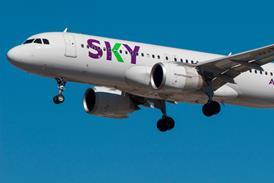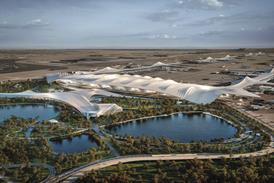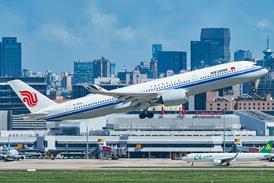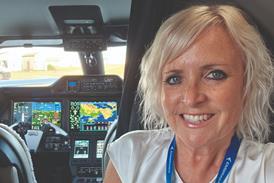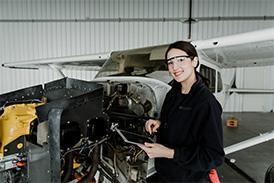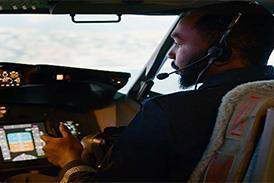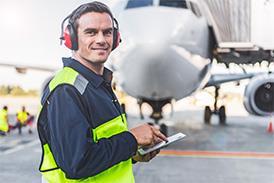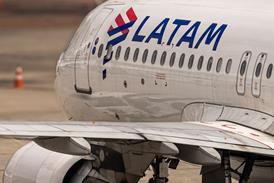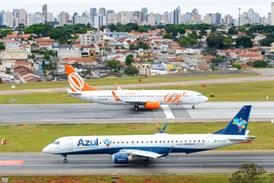Flydubai chief executive Ghaith Al Ghaith says uncertainty over 737 Max 10 delivery schedules was a major factor behind the long-time Boeing operator’s decision to order the Airbus A321neo.
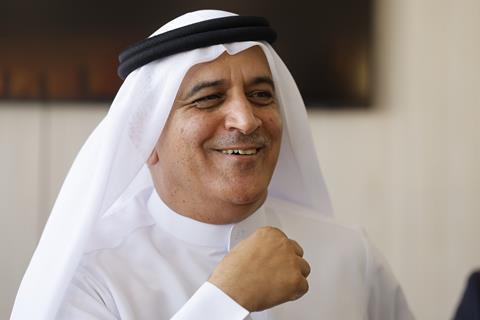
The airline announced a commitment for 150 of the largest variant of Airbus’s narrowbody at the Dubai air show on 18 November, with deliveries beginning in 2031 and running to 2043.
However, speaking to media on 19 November, Al Ghaith said the Dubai-based airline needed assurance that it would receive the higher-capacity aircraft in time for an anticipated rapid expansion of its route network in the early 2030s, as it moves operations from Dubai International airport to Al Maktoum International, which will become the city’s new hub during that decade.
“The [A321neo] gives us 50 more seats than the largest Max, and two more hours [of range],” says Al Ghaith. “The main decision was based on availability. There is no clarity on the [Max 10] and this gives the [A321neo] a head start.”
Nevertheless, Flydubai appears to be covering its bases, having unveiled a provisional order for up to 150 additional Max aircraft.
Although Flydubai has not confirmed if it will opt for the A321LR or A321XLR longer-range variants over the standard A321neo, the former offer typical ranges of 4,000nm (7,400km) and 4,700nm, respectively, compared with approximately 3,850nm for the 737 Max 9, the largest Boeing in Flydubai’s fleet.
The US manufacturer originally intended to have the Max 10 certificated in 2023, but technical snags, including with the engine anti-ice system, have held up the programme. On the eve of the air show, Stephanie Pope, chief executive of Boeing Commercial Airplanes, said approval of the Max 10, along with its smaller sibling, the Max 7, was “on track” for regulatory approval in 2026.
Since being set up in 2008, Flydubai has flown an all-737 fleet – it currently operates 27 737-800s, 65 737 Max 8s, and three Max 9s – but at the 2023 edition of the Dubai air show it confirmed its first widebody order, for 30 787-9s.
Al Ghaith says that the A321neos will allow Flydubai to develop new mid-haul destinations as well as adding larger-gauge aircraft to current routes that are “crying out for more capacity”.
Flydubai expects to receive its first 787s in 2027. Although it has selected the GE Aerospace GEnx engine over the rival Rolls-Royce Trent 1000 to power its new widebodies, it has not announced a selection of powerplant for the A321neos.
Al Ghaith says the airline has “time to decide on an engine” and that it will be a “tough decision”. However, because 737s are all CFM-powered, that would seem to give the Leap-1A an advantage over the Pratt & Whitney PW1100G.
He says the 787s will be used to expand Flydubai’s route network but also to add capacity on routes currently served by 737s.
Launched as a low-cost carrier, Flydubai’s shift to become a hybrid airline – it offers business class cabins and will soon install free Starlink in-flight connectivity across its fleet – did not “happen overnight”, says Al Ghaith, but was a result of “trial and error” to “create a product that will fit this market and complement [sister airline Emirates].” Both Dubai carriers are owned by the government of Dubai.
A pure low-cost model “does not work” in the Middle East because of the mix of customer budgets and expectations, he says.
Ghaith says Flydubai will gradually move aircraft to Al Maktoum airport – which Dubai intends to make the world’s biggest international gateway – in the next few years, with the entire operation relocating by 2032 when Dubai International is expected to close.
The airline previously operated a limited number of flights from the new airport but withdrew during the pandemic.
Although Flydubai is a codeshare partner with Emirates, operating many interlining flights through Dubai, the fact that the airlines largely operate from terminals on separate sides of the airport – connecting passengers must travel by bus – has been a challenge.
Al Ghaith says Flydubai will announce details of its Starlink roll out in the next few months, noting that for younger passengers a reliable on-board internet connection is becoming “as important as having a seat”. He adds: “It’s a no-brainer because we are building an airline for the younger generation.”


